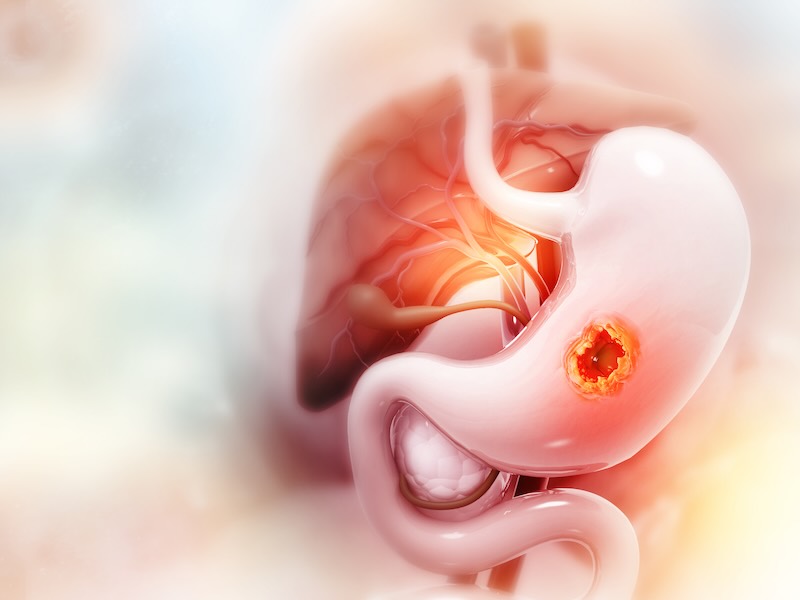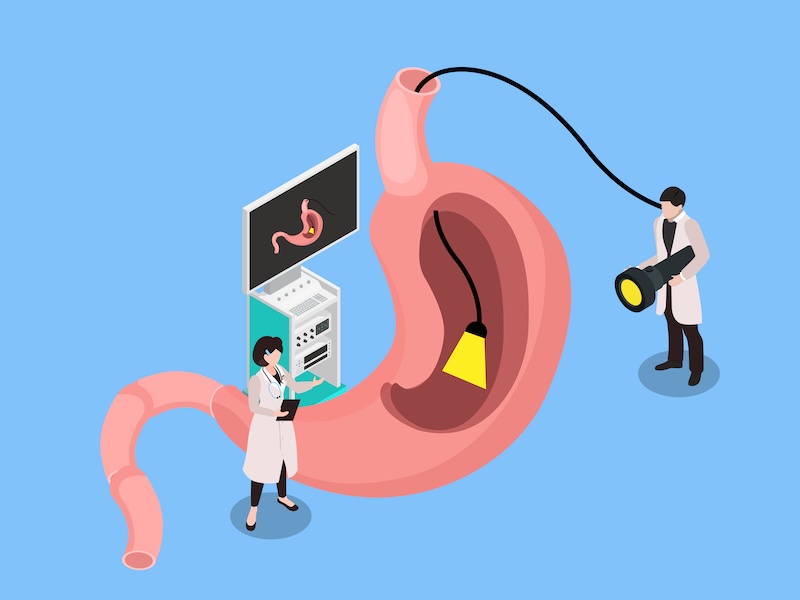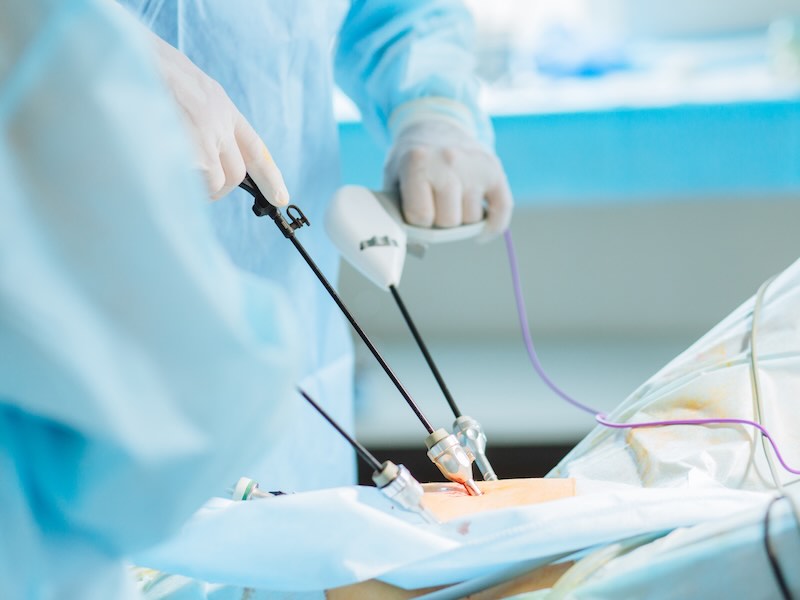
Peptic Ulcer Disease
About the Stomach
Additionally, the inside lining of the stomach is made up of small folds called rugae that expand as food enters into the stomach to allow for large quantities of food to be stored as it undergoes initial digestion. The stomach also makes gastric juice which is the main mechanism by which food is digested. The juice is made up of many things including hydrochloric acid (a strong acid that breaks down food and other foreign materials) and pepsin (an enzyme used to digest protein).
Because of the highly caustic nature of the acid the stomach protects itself with an inner lining against the acid so that the stomach itself doesn’t get digested. The stomach also has barriers within it to prevent acid from moving up into the esophagus (lower esophageal sphincter) and into the first portion of the intestines known as the duodenum (pyloric sphincter).

About Peptic Ulcer Disease
Peptic Ulcer Disease comprises defects in the inner lining of the stomach or duodenum (first portion of intestines) that extend into the next layer of the organs. Normally, there is a protective barrier that prevents acid from injuring the delicate lining of the stomach and duodenum but when they are broken down as a result of excess acid or breakdown of the protective lining itself it will result in an ulcer.
Causes of breakdown of the lining include NSAIDs, infection by a bacteria called H. pylori, alcohol, bile salts, acid and pepsin. Patients will present with symptoms of a gnawking, burning pain within the upper abdomen that occurs shortly after meals. If left untreated these ulcers may go on to cause obstruction resulting in nausea and vomiting, bleeding, or perforation (rupturing through all the layers of the stomach or duodenum).

Identification of Peptic Ulcers
Ulcers are usually identified using endoscopy where biopsies may be taken to detect whether the H. pylori bacteria or cancer is present. If H. pylori is present antibiotics in addition to acid suppression therapy as described above will usually allow for healing and resolution of ulcers and symptoms. In ulcers caused by excess NSAID use that medication is stopped immediately.

Treating Peptic Ulcer Disease
Surgery is indicated in situations where people fail medical management or are unstable from a complicated presentation of the ulcer. There are many surgical procedures performed for peptic ulcer disease. The type performed usually is dependent upon presenting symptoms and level of stability.
They include oversewing of ulcer in the case that it is bleeding, and patching the ulcer in the case that it has perforated. After both of these, treatment for H. pylori and acid suppression is indicated. Additionally, vagotomy (cutting the vagus nerve which stimulates acid release) and pyloroplasty, vagotomy and antrectomy with reconstruction or highly selective vagotomy can be performed for refractory or complicated peptic ulcer disease




